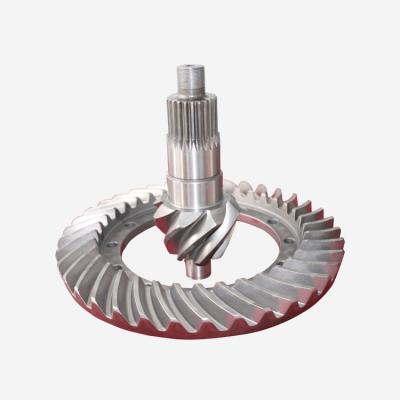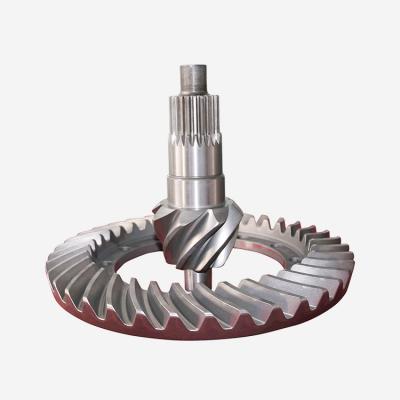What are the applications of spiral bevel gear? What are its advantages?
There are two types of spiral bevel gears. Among the helical gears, there are spur gears and curved gears according to the length direction of the gear teeth. Their division is mainly based on length profiles and frustum intersections. If the intersection of the length profile and the frustum is a straight line, then it is a spur gear. If the intersection of the length profile and the frustum surface is a curve, it is a curved gear. The different curves also divide helical gears into three categories.
Advantages of Helical Gears
Compared with ordinary gears, the transmission of spiral bevel gears is more stable and the noise is lower during transmission. It has a high carrying capacity. The transmission process is stable, the structure is compact, the work is reliable, and the space is saved. Wear resistance is longer than ordinary gears. It can be said that the transmission efficiency of the helical gear is the highest among all gears.
use helical gear
According to the different characteristics of the spiral bevel gear, its application range is also different. Curved gears are used more widely than spur gears, mainly because of their load carrying capacity. It is higher than the curve gear, the noise is low when working, and the transmission process is stable. It has a long service life and is used in the aviation, marine and automotive industries.
Classification of Helical Gears
Spiral bevel gears are generally divided into spur gears, helical gears and curved gears. This is mainly based on the gear rotation type of intersecting axes and interlaced axes, and according to the characteristics of the tooth length curve. Helical gears are classified according to the form of tooth height. Different helical gears have different processing methods.
When choosing helical gears, you can choose different helical bevel gears according to your needs. We must choose helical gears produced by excellent or well-known companies to improve the efficiency of mechanical operation.




